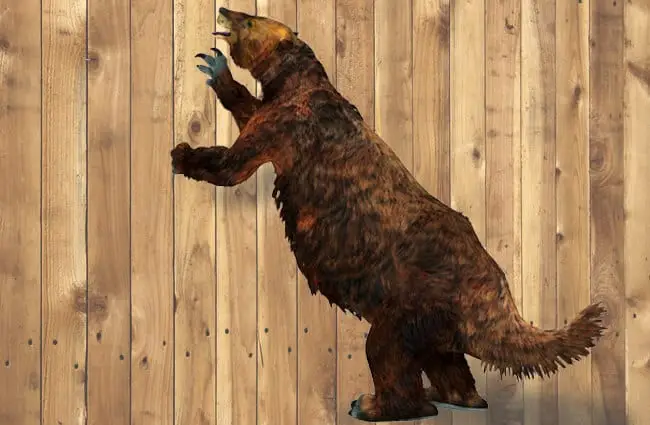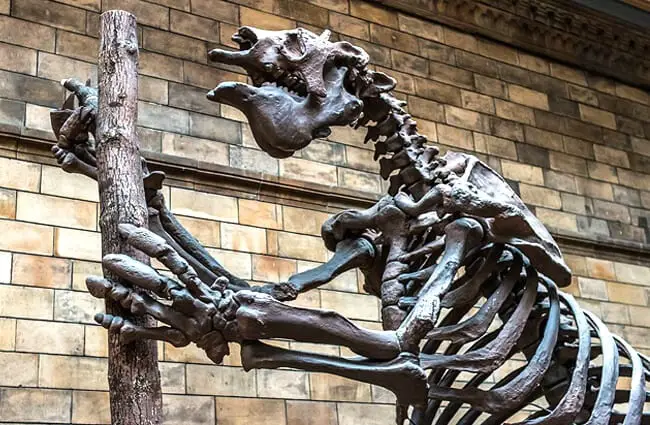The world before us echoes with the presence of giants. Creatures that seem to have leapt straight from myth roamed the Americas for millennia, leaving a legacy of wonder and scientific intrigue. These were the giant ground sloths, a diverse group of mammals that were remarkably different from their modern tree‑dwelling relatives. This article explores the fascinating world of these extinct behemoths, delving into their evolution, habitat, diet, behavior, and eventual disappearance.
What Were Giant Ground Sloths?
Giant ground sloths were not a single species but a varied group belonging to the suborder Folivora, which also includes the modern two‑ and three‑toed sloths. While today’s sloths are arboreal specialists, their extinct relatives were primarily terrestrial and often massive. The largest species, such as Megatherium americanum, could reach lengths of up to 9 meters and weigh between 4 and 8 tons, comparable to the size of a modern elephant.

A Family Tree of Giants
The family tree of giant ground sloths is complex, with numerous genera and species identified. Some key groups include:
- Megatheriidae: The largest of the ground sloths, including Megatherium and Eremotherium. These animals were powerfully built and had massive claws.
- Mylodontidae: Characterized by bony plates embedded in their skin, providing protection against predators. Mylodon darwinii is a well‑known species.
- Nothrotheriidae: A more specialized group with smaller sizes and distinct dental features. Nothrotheriops shastensis is a prominent example.
Habitat and Distribution
For millions of years, giant ground sloths thrived across the Americas, from southern Canada to Patagonia. Their habitats were diverse, encompassing grasslands, woodlands, and temperate rainforests. Fossil evidence suggests that they were adaptable creatures, capable of exploiting a wide range of resources.
Distribution varied by species. Eremotherium, one of the largest, was found throughout much of South America and even reached parts of North America. Mylodon darwinii was primarily confined to southern South America, while Nothrotheriops shastensis roamed the southwestern United States and Mexico.
Diet and Feeding Behavior
Despite their massive size, giant ground sloths were primarily herbivores. Their diet included leaves, twigs, fruits, and grasses. Their teeth were adapted for grinding tough plant material, featuring low crowns and numerous ridges. Fossilized gut contents and coprolites (fossilized dung) provide valuable insights into their dietary preferences.

They likely used their massive claws to pull down branches and dig for roots and tubers. Some species may have supplemented their diet with abrasive materials like soil and pebbles, aiding digestion. The way they acquired food likely influenced local vegetation, making them important players in seed dispersal and landscape modification.
Life History and Reproduction
Understanding the life history of giant ground sloths is challenging due to limited fossil evidence. However, scientists can infer details from bone structure and comparisons with modern sloths. They probably had slow reproductive rates, giving birth to one or a few offspring at a time.
Young sloths were likely dependent on their mothers for several years, learning essential survival skills. Lifespan estimates range from 20 to 30 years. Evidence suggests they may have lived in small family groups or solitary, occasionally gathering for mating purposes.
Interaction with Other Animals and the Ecosystem
Giant ground sloths were integral parts of their ecosystems, influencing plant communities and serving as prey for large predators. Their browsing and digging activities helped shape vegetation structure and nutrient cycling. Fossil evidence indicates that they coexisted with saber‑toothed cats, dire wolves, and other formidable predators.

While their large size and tough hide offered some protection against predators, young or vulnerable individuals were still at risk. Their carcasses would have provided a valuable food source for scavengers. Additionally, sloths may have played a role in seed dispersal, contributing to plant diversity and forest regeneration.
The Demise of the Giants
Giant ground sloths persisted for millions of years but ultimately went extinct around 11,000 years ago, at the end of the Pleistocene epoch. The exact cause of their extinction remains debated, but a combination of factors is likely responsible.
The arrival of humans in the Americas coincided with the decline of many large mammal species, including ground sloths. Overhunting by humans may have contributed to their extinction, especially for the more vulnerable species. Climate change, with shifting vegetation patterns and reduced habitat availability, likely exacerbated the situation.

It is probable that a combination of human impact and climate change created a perfect storm, pushing these gentle giants over the brink.
Human Interaction and Cultural Significance
Evidence indicates that early humans interacted with giant ground sloths, both as hunters and scavengers. Archaeological sites have yielded bones with cut marks, showing that humans butchered and consumed sloth meat. Rock art depicting sloths suggests that they held cultural significance for some indigenous peoples.
Stories and legends about giant sloths have been passed down through generations, reflecting the awe and wonder these creatures inspired. Some cultures may have viewed them as powerful spirits or mythical beings. The discovery of well‑preserved sloth remains continues to captivate scientists and the public alike, sparking renewed interest in these fascinating animals.
For the Aspiring Zoologist
Studying giant ground sloths provides valuable insights into evolutionary history, paleoecology, and the impact of humans on megafauna. Researchers employ fossil analysis, radiocarbon dating, and genetic studies to unravel the mysteries surrounding these extinct animals.
Current research focuses on reconstructing sloth behavior, determining their phylogenetic relationships, and understanding the factors that contributed to their extinction. The study of giant ground sloths continues to illuminate the past and informs our understanding of the present.

The legacy of the giant ground sloths endures, reminding us of the remarkable diversity of life on Earth and the importance of preserving our planet’s natural heritage. These magnificent creatures, though gone, continue to inspire and intrigue, offering a glimpse into a world long past.

![Red Angus Closeup of a beautiful Red Angus cowPhoto by: U.S. Department of Agriculture [pubic domain]https://creativecommons.org/licenses/by/2.0/](https://animals.net/wp-content/uploads/2020/03/Red-Angus-4-238x178.jpg)




![Red Angus Closeup of a beautiful Red Angus cowPhoto by: U.S. Department of Agriculture [pubic domain]https://creativecommons.org/licenses/by/2.0/](https://animals.net/wp-content/uploads/2020/03/Red-Angus-4-100x75.jpg)

